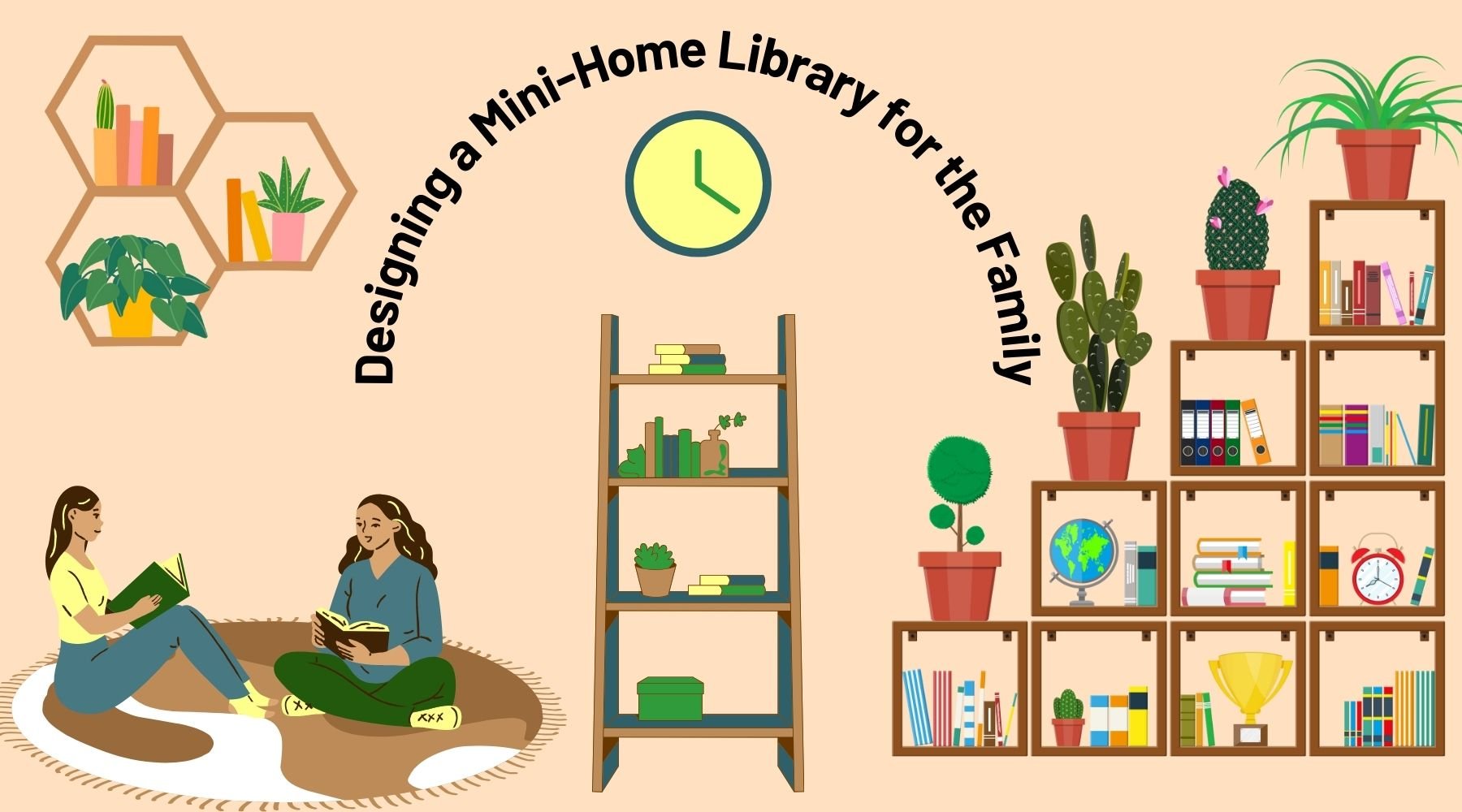Wouldn’t it be great to get the kids off the screens, see them feeling less stressed, and partaking in more quality family time together? Encouraging family reading time can help you do that. One way that can encourage others to read as a hobby is creating a cozy area that’s perfect for winding down, getting stuck into a good book, and becoming lost in a fantasy world full of mystique and imaginary adventures. The advantage of the mini nature of these is that you don’t need to dedicate a room to it. If you already have a study or a home office, a mini-library can slot into a corner nook, under a staircase, or for bigger collections, create a feature wall with shelving. It doesn’t need to be integrated units.
7 steps to design a fun and stylish mini-home library for the family
-
Decide on an appropriate space to prevent damage to paper

Stacey Swinehart | CC BY-NC-ND 2.0
Books require stability in room temperature and humidity levels. Exterior walls and those near kitchens and bathrooms are prone to temperature and humidity fluctuations. Putting shelves on the exterior walls can lead to mold and mildew growth on paper products. That’s the same for any type of wall art, too. When hanging frames on exterior walls, those should be sealed to protect the paper inside them. For collectible display books, you’ll want to have shelving away from direct sunlight to prevent the pages yellowing, and/or the colors of the bookbinding fading. The important thing is that the wall space you use has stable temperature and humidity levels.
-
Take an inventory of your book collections and create an organizational system

For a mini-home library for the family, there are likely to be various genres, a mix of fiction and non-fiction, and multiple colors of book spines. It’s a playground for creative ingenuity. How do you arrange such a vast collection of books? Randomly placing books on shelves will undoubtedly make it difficult to find titles. It may be fine if all the books are of interest to everyone in the family, but for those with study books, journals, music books, and personal literature materials like bookmarks, Post-Its, and perhaps miniatures to go with the book themes in their collections, random displays are unlikely to cut it.
What usually works with multiple themes is dedicated shelf space for each genre and related sub-genre. History buffs can have a shelf with all their history books, and those interested in 3D puzzles like bookshelf inserts may also have an interest in architecture, whether that’s famous landmarks of magnificent stature, or miniature collectibles from their travels to accompany itineraries and brochures on bookshelves, segregate them into categories.
Begin the planning stage with organization in mind. Start with an inventory of your current book collection, and work out how many shelves you need to dedicate space to each genre and sub-genre for each person who will be using the library. For a family of four with several interests, that could mean you need 3 shelves each so a total of 12 shelves.
-
Plan the shelving layout with usability in mind

Bookshelves give you more creative freedom than bookcases do as you can space shelves out, overlap some, and arrange them around other furniture like a study desk. For families with toddlers, smaller floor-standing book display units could have shelves installed above and around them. The advantage of segregating by height where younger ones are using the space is that any smaller bookshelf décor pieces can be placed out of reach of smaller ones.
-
Use the appropriate materials for shelving

Collections of books can become heavy. Not all shelf materials can support the weight without the use of additional supporting wall brackets. The more books you have, the thicker and sturdier a board you’ll need for shelving. The typical load bearing of a bookshelf is 20 lbs per 10 inches of width. Every type of wood has a sag limit. Know that in advance to avoid piling on too much weight that damages the structural integrity. The sturdiest material is 1 to 1.5” red oak providing a maximum no-sag limit of 78”. That’s a fairly long run for a bookshelf. A 3/4" particleboard shelf has a shorter no-sag limit of just 26”. The same thickness of plywood can support up to 32”.
Keep in mind that you don’t have to fully load your shelves with books. In fact, for a mini-home library that’s far more personalized, and therefore, offers a more inviting feel to it, encouraging its use, it’s better to take some time to decorate a bookshelf with knick-knacks, photos, memorabilia, and similar decorative apparel. Lightening the load prevents sagging.
-
Get the spacing right

Wouldn’t it be grand if our books were a uniform size? Sadly, that’s not the case. Standard books, (meaning those published by mainstream publishers) are generally suited to shelves with 10” to 12” of spacing. These books are typically 9.5” x 7”. For those with more varied interests, and requiring space for other items like small collectibles, LPs, CDs, travel guides, novels, comics, art books, and more, you’re likely to need more varied shelving dimensions. For these types of shelf displays, the deepest shelves go to the top and the narrowest to the bottom. That way, there’s less of a risk of small heads running into shelves poking out too far. The widest you’ll likely need for ring binders will be around 14”. In terms of height, the highest shelf should be reachable with ease. That’s typically between 72” and 78” for adults. For shelves beside a reading chair that you’d like to have within arm’s reach, those are generally installed at 60” from the floor.
-
Plan the design

Every project goes smoother when it’s planned with precision. Before installing the shelving, think of how the mini-library will be used. If you want to have a modern library with desk space for a laptop for kids to do their homework, plan to work the shelves around the width and height of the desk. If you want the reading space to be an entirely tech-free zone, consider if a screen/room divider would be beneficial and perhaps a hobby craft table put in to make the area a tech-free zone in the home for no-tech hobbies.
Seating and lighting should be factored in so that it’s comfortable to sit in and relax with a book without experiencing eye strain from a lack of lighting. Wherever you plan to position seating, see if you can manage to get a shelf within easy reach, or if additional space would be best left for a side table for sitting beverages and reading accessories on.
-
Keep the shelf display interesting to encourage its use

To inspire the younger generation to pick up paperbacks and get involved in tech-free hobbies, plan activities to do together in the mini-library. Reading is only one hobby. Various family activities can be done based on the themes of books. There's many more types of hobbies like assembling book nook kits, dioramas, origami, DIY bookbinding techniques, and similar Japanese activities for kids as those rarely venture into using technology. Whatever genre those in your family take a shine to, encourage them to expand their creativity by making display items to further personalize the space. The more personalized it becomes, the more cozy it will feel to use.




Share:
Dungeons and Dragons Gifts and Ideas for All Player Levels
Bookshelf Design Ideas with Themed Book Nook Kits